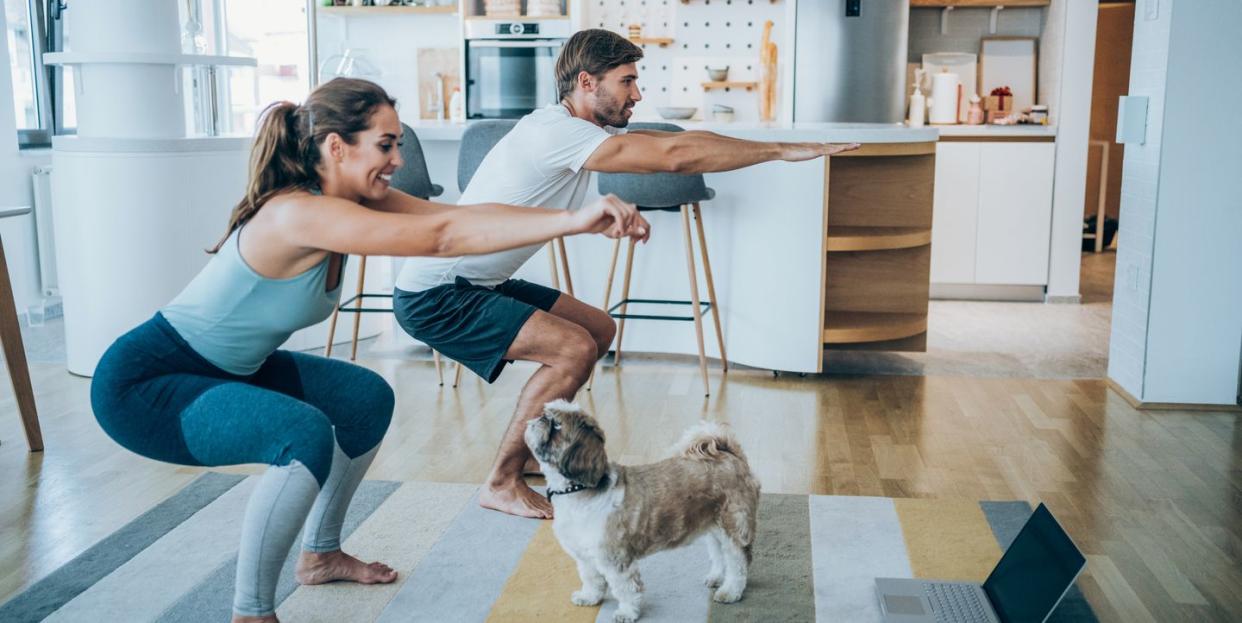How Movement ‘Snacks’ Build Muscle, According to Research

A study in the Journal of Applied Physiology suggests quick bursts of moderate-intensity exercise can help your body use amino acids from your meals, which helps you build muscle.
Researchers found that even just a few minutes of walking or doing squats can lead to this positive effect.
Prolonged sitting has been linked to negative health consequences in numerous studies. For example, one study found sedentary time can increase risk for cardiovascular disease—which is why taking short “movement breaks” of even just a few minutes can be beneficial.
Another advantage: A new study in the Journal of Applied Physiology suggests brief bouts of moderate-intensity exercise can prompt the body to use more amino acids from meals and that, in turn, helps support muscle mass.
Researchers looked at 12 men and women who did three separate sessions of sitting for about seven hours without a break. On different days, they did three sessions of sitting about the same amount of time, but got up every 30 minutes and did either a short walk or bodyweight squats.
Their food intake was controlled with meals offering a specific mix of macronutrients—55 percent carbs, 30 percent fat, and 15 percent protein—the day before each session. Researchers used blood samples and muscle biopsies to determine how their bodies were responding to intermittent movement compared to sedentary time.
Researchers found that when the participants did the movement snack sessions, they utilized amino acids much more efficiently than when they were only sitting.
According to lead author Daniel Moore, Ph.D., associate professor of muscle physiology at the University of Toronto, two minutes of activity can also improve how the body processes sugars from food.
Moore told Runner’s World this has a significant effect on quantity and quality of muscle. Previous research has emphasized this connection, but this study also uncovers the role of making amino acids more available to skeletal muscle, Moore said. That greatly expands the benefits of movement snacks on muscle mass.
“Our results highlight the importance of breaking up prolonged sedentary periods with brief activity snacks,” he added. “They also highlight that moving after we eat can make our nutrition better and could allow more dietary amino acids from smaller meals or lower quality types of protein to be used more efficiently.”
One major limitation of the study is its small participant size, which means larger studies will need to be done in order to confirm the results. However, earlier research highlights similar findings.
For example, a study in BMJ Open Sport & Exercise Medicine looked at 53 normally sedentary people and assessed how moderate-intensity exercise in 10-minute bouts a few times per week improved health markers. They found even these brief sessions boosted oxygen consumption and improved cardiovascular function.
Another study, in the Journal of Strength and Conditioning Research involving 20 women and 17 men, suggests that two short, daily activity bouts can not only be just as effective as one 30-minute continuous fitness session, but for some people, may actually be an even better choice for heart rate and blood pressure.
The takeaway? Brief bouts of movement throughout the day work on multiple levels to make your body more efficient, and that includes both your muscle mass and cardiovascular system. Plus, it makes a day of sitting still much more energizing.
You Might Also Like

